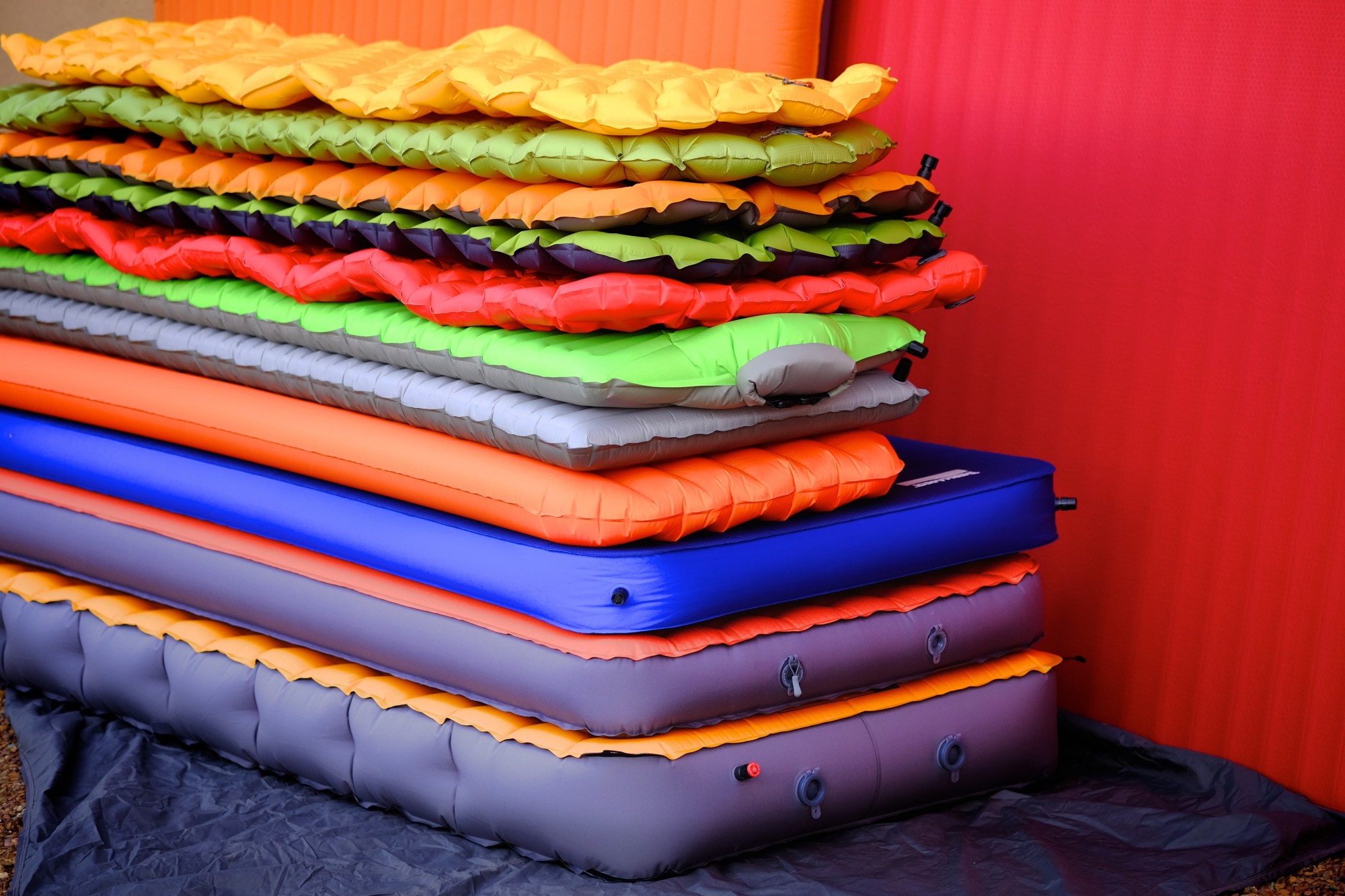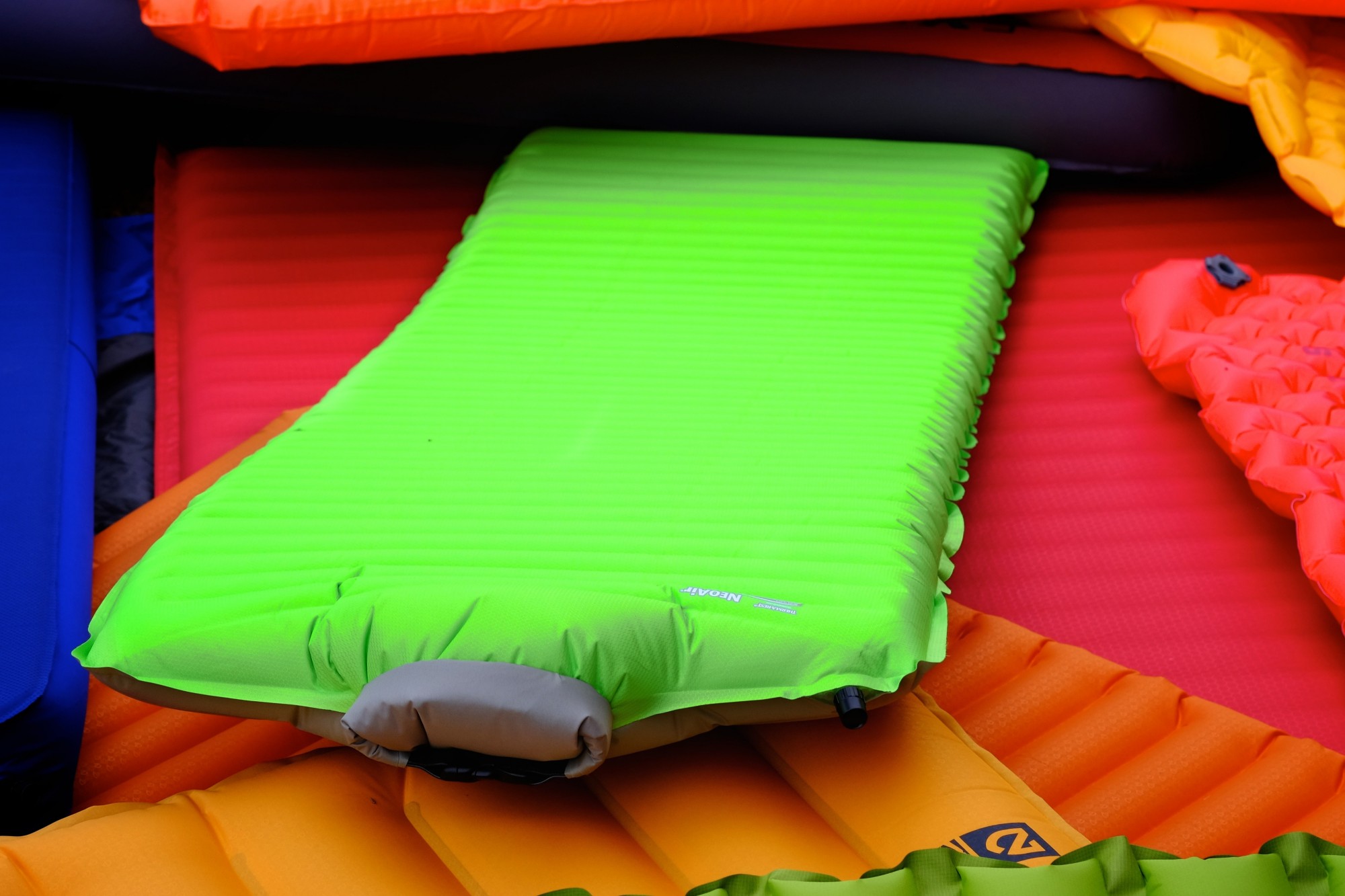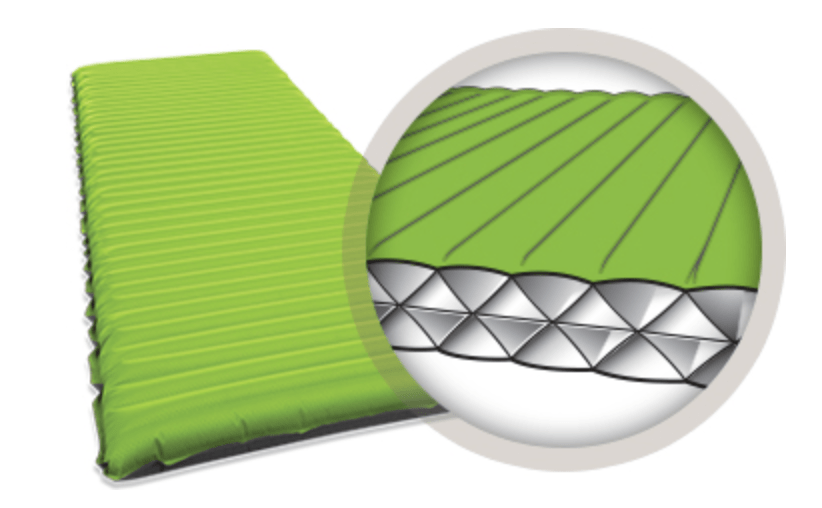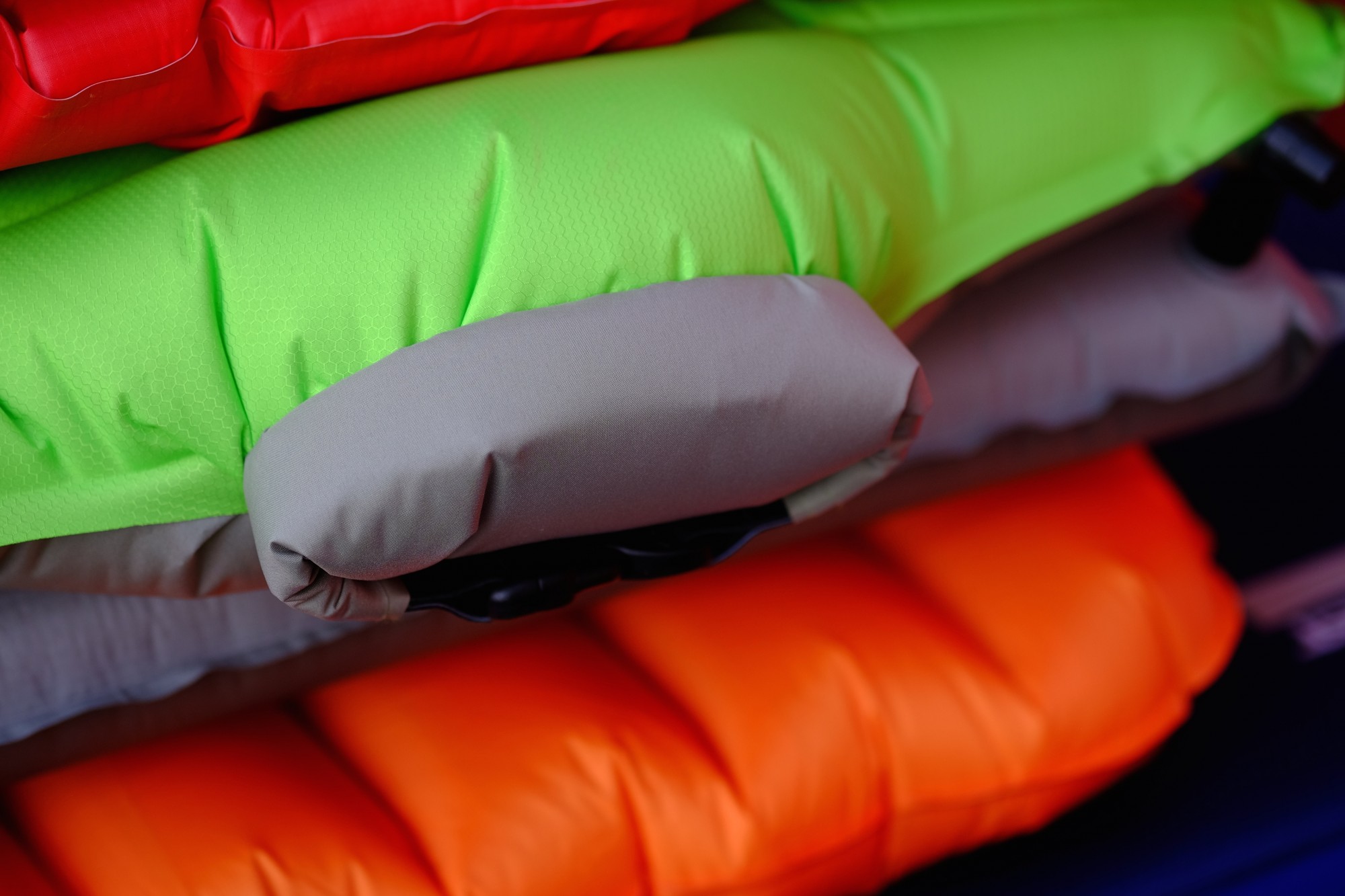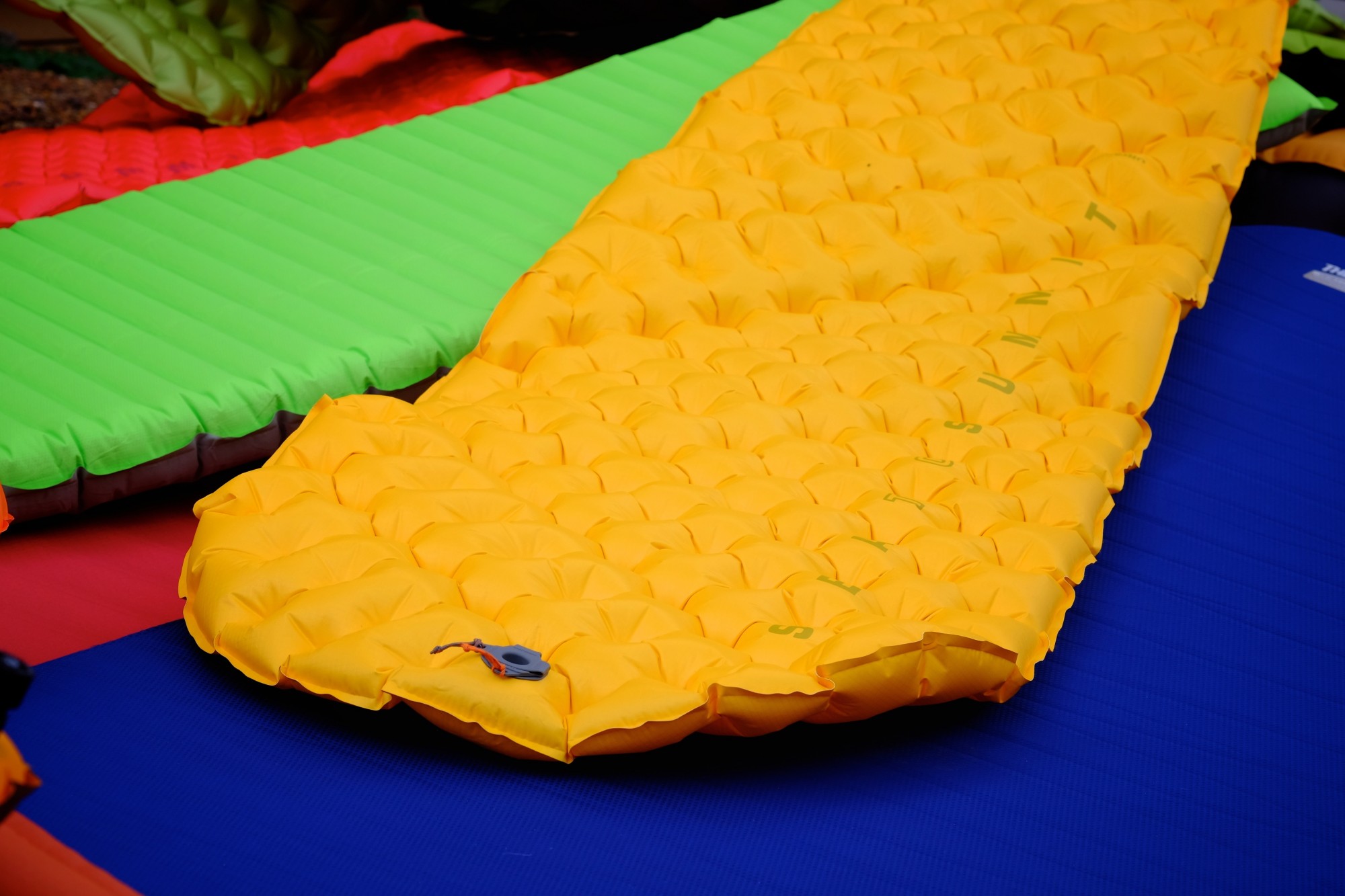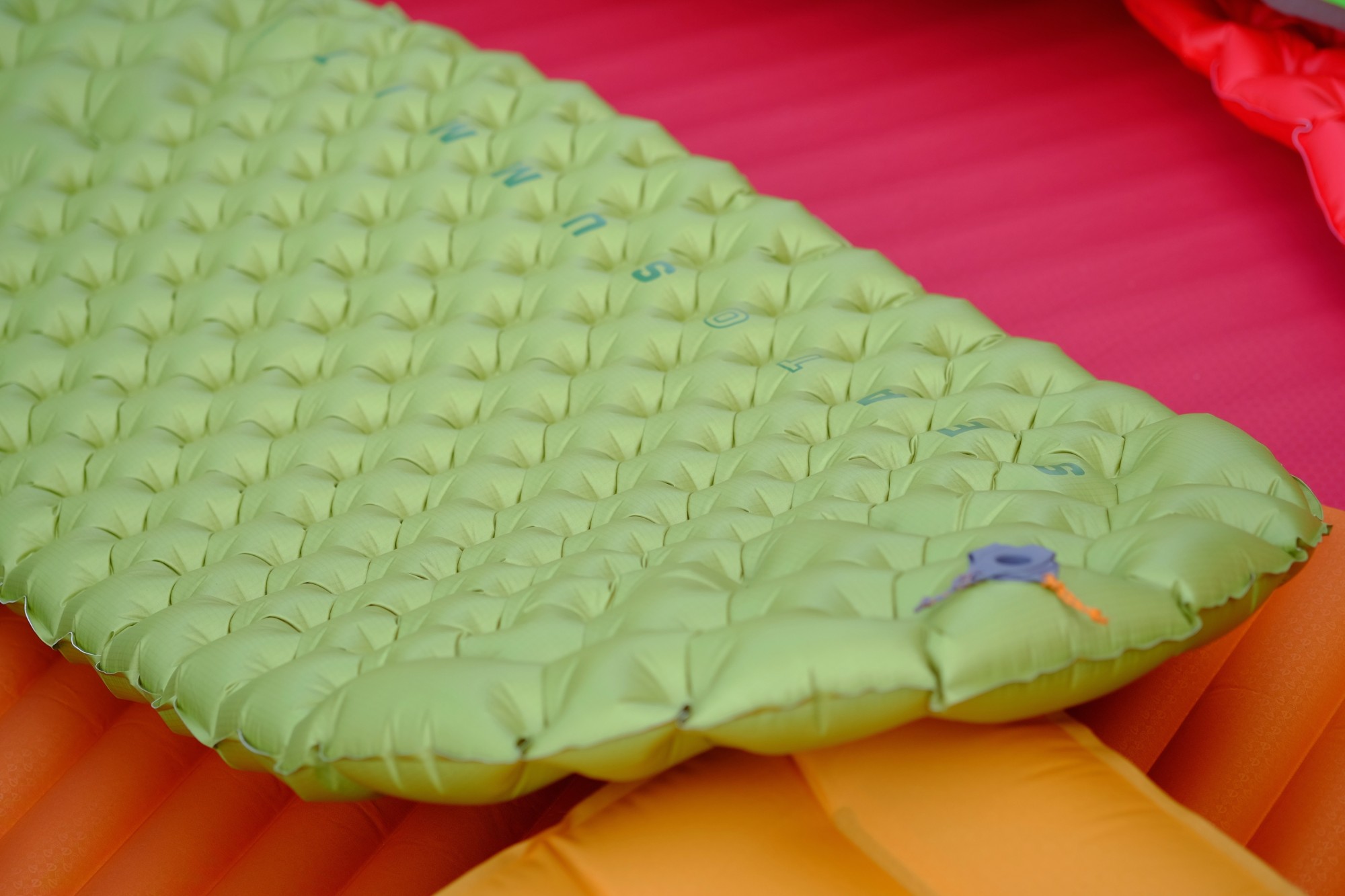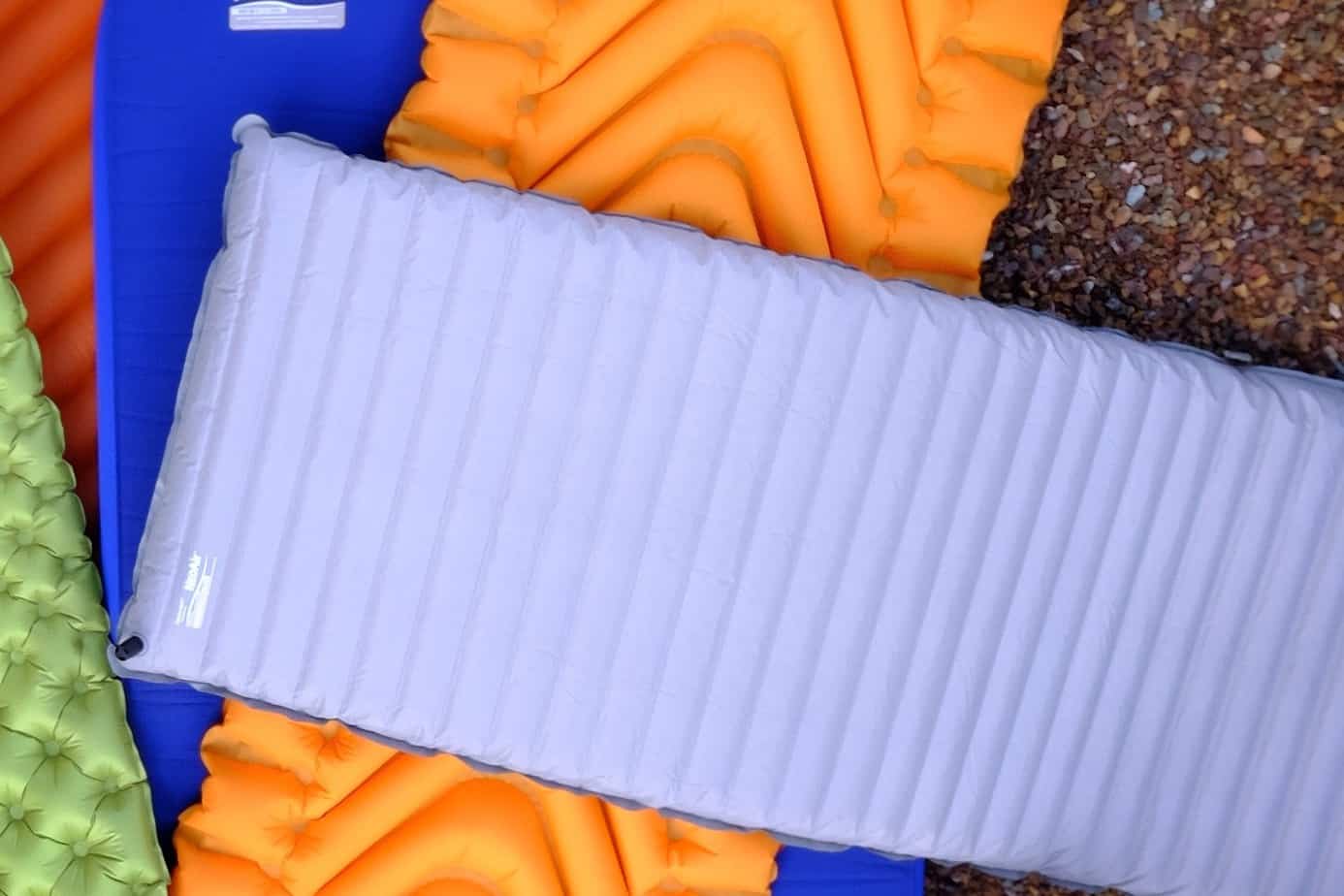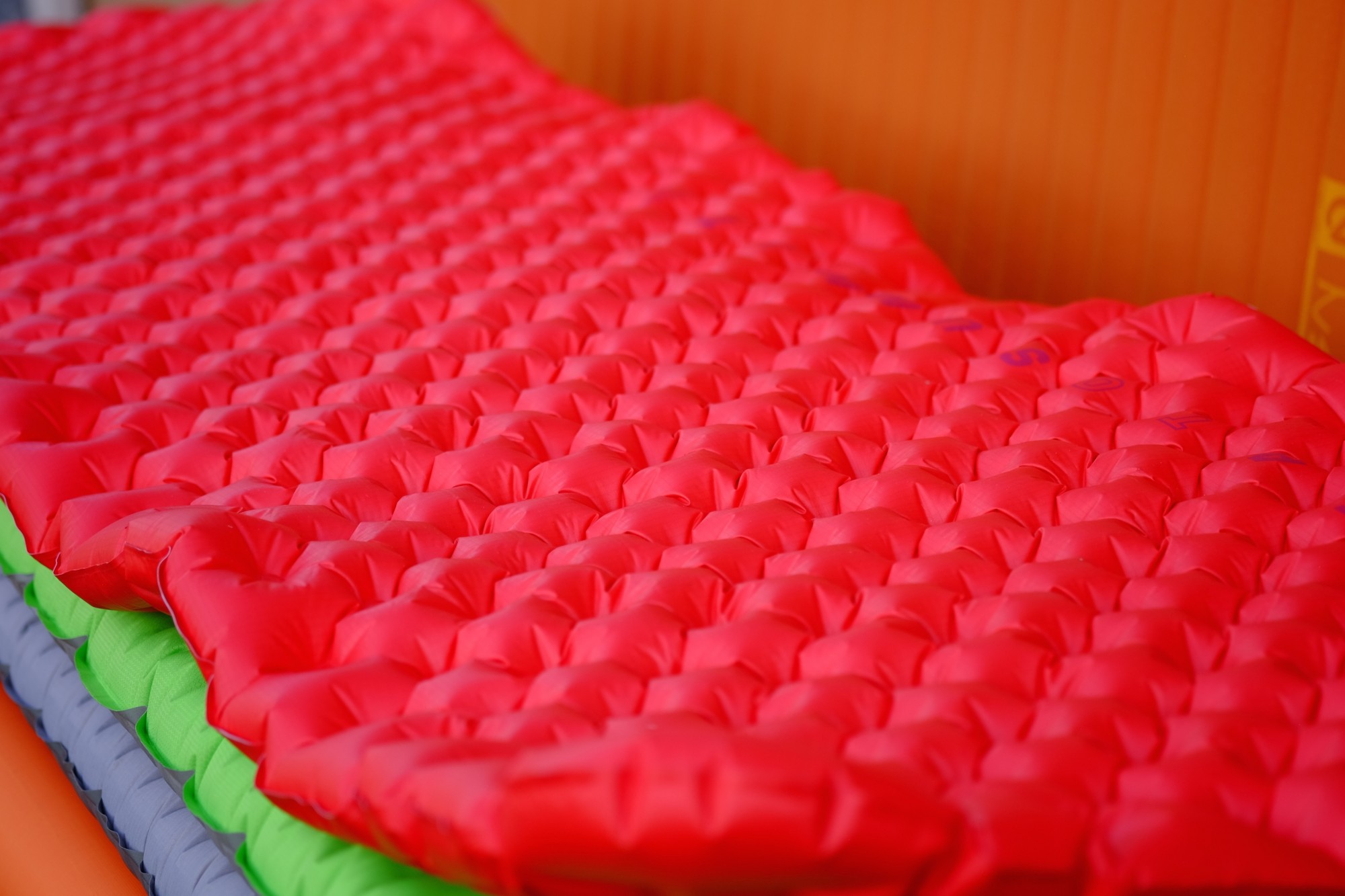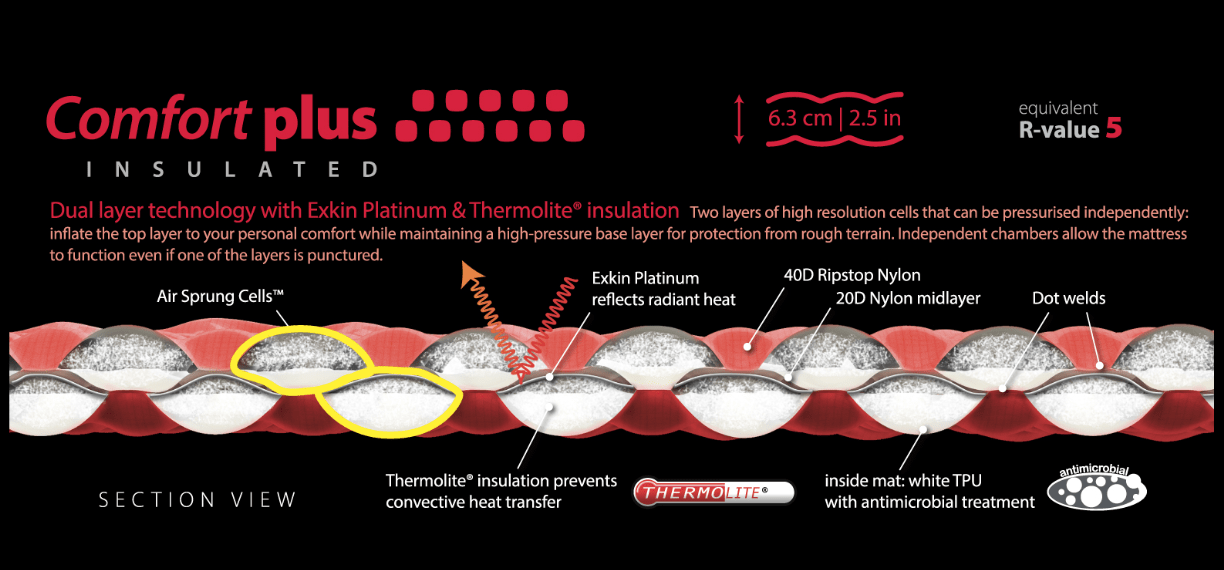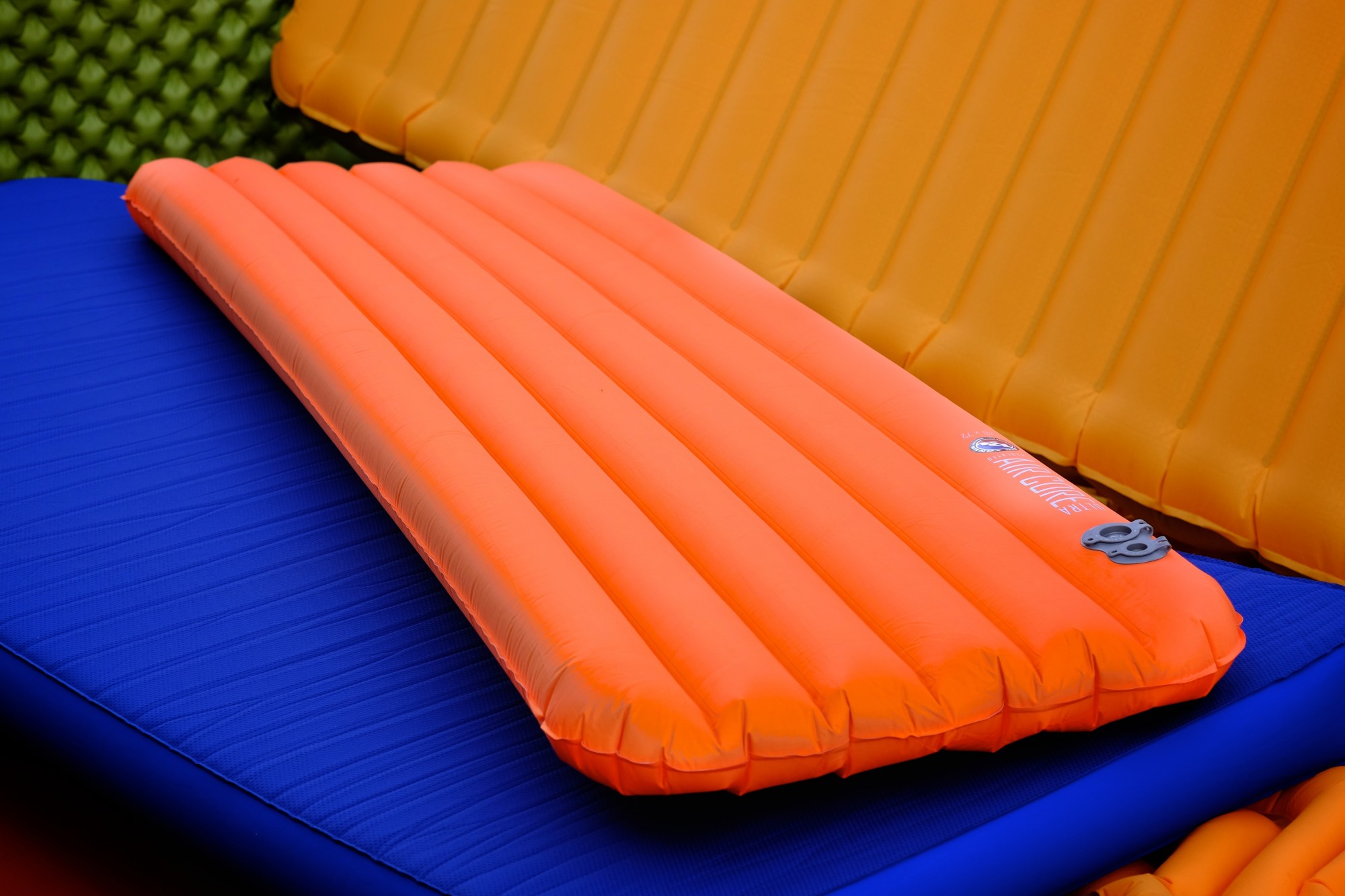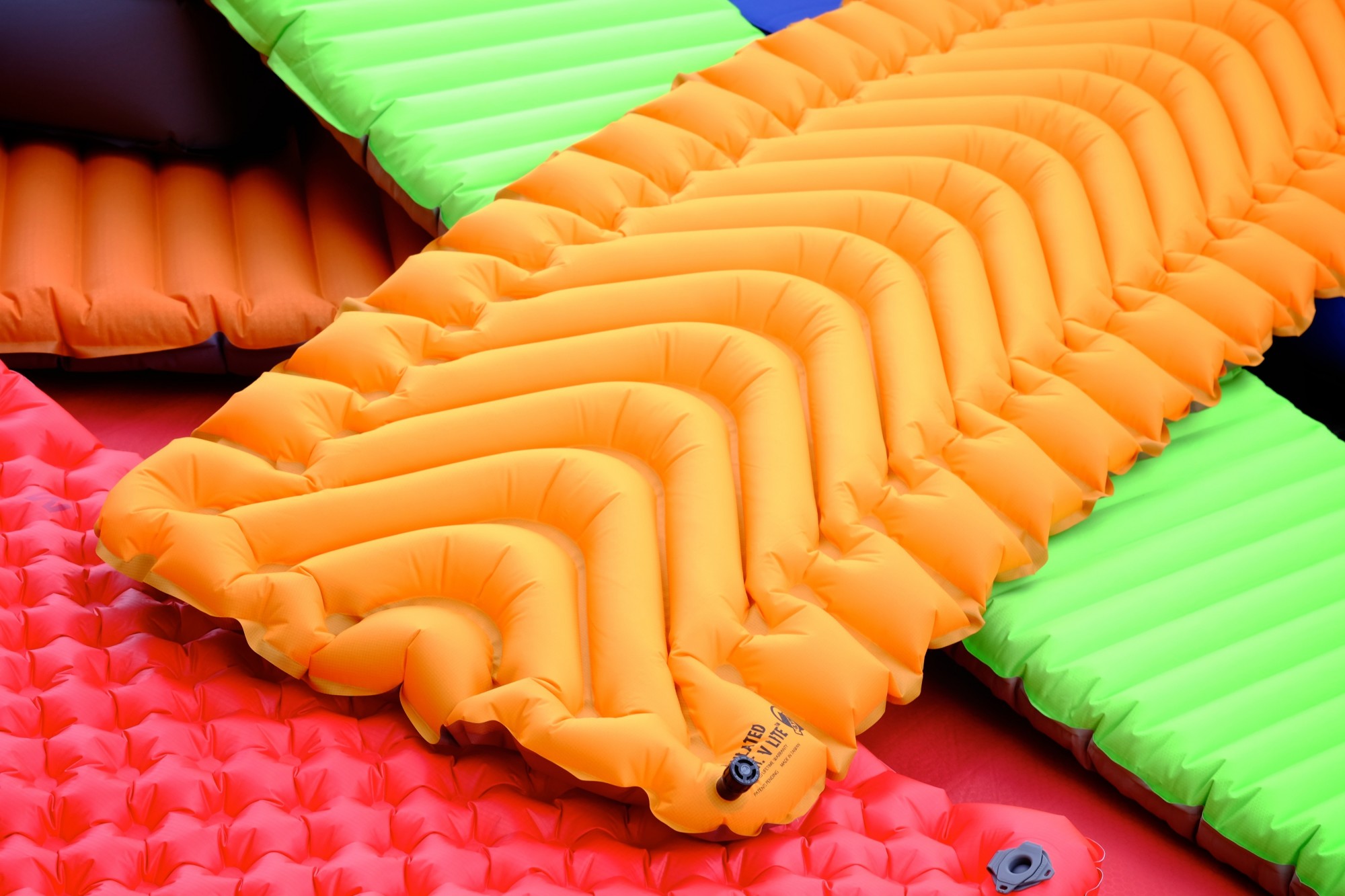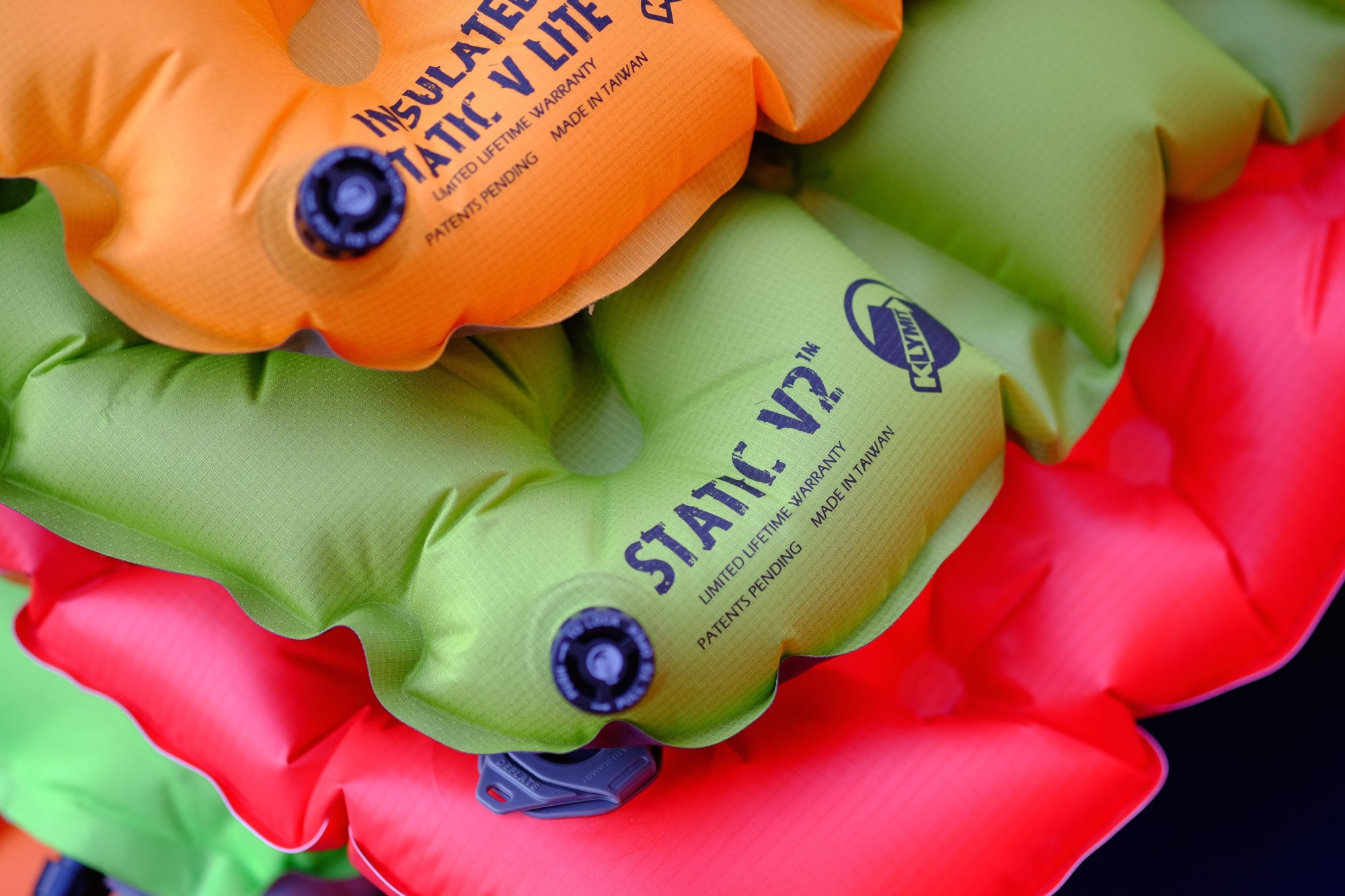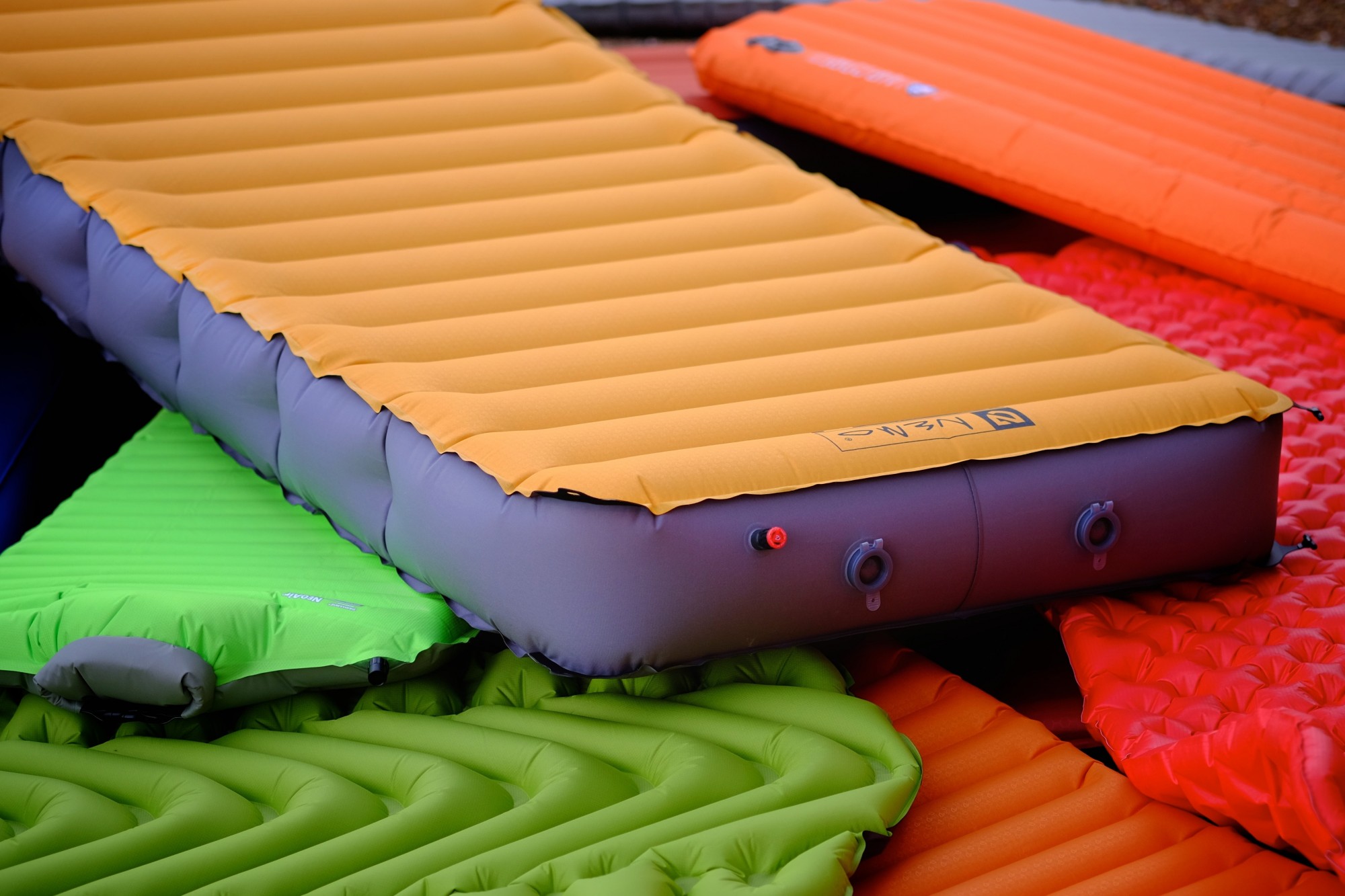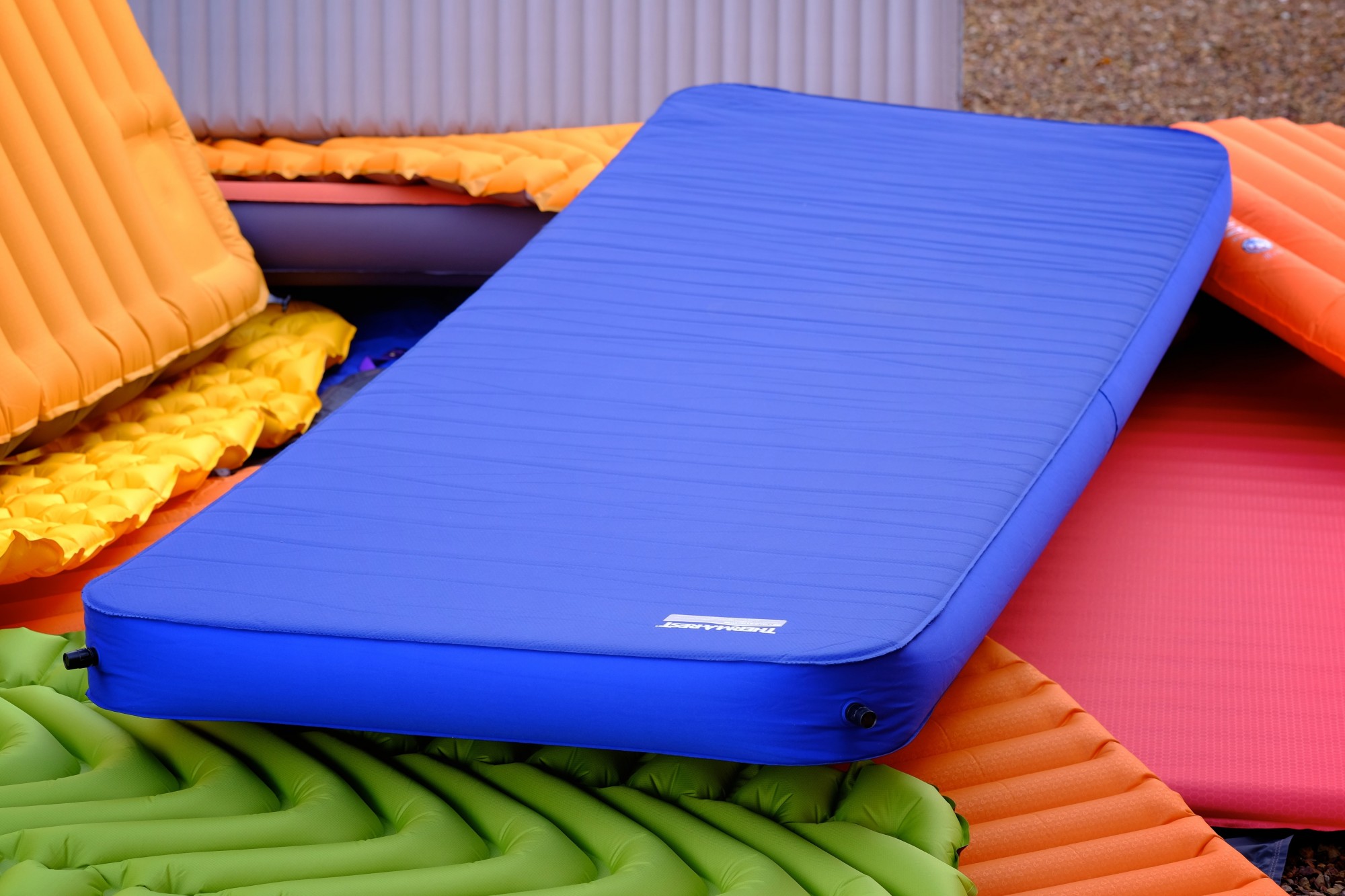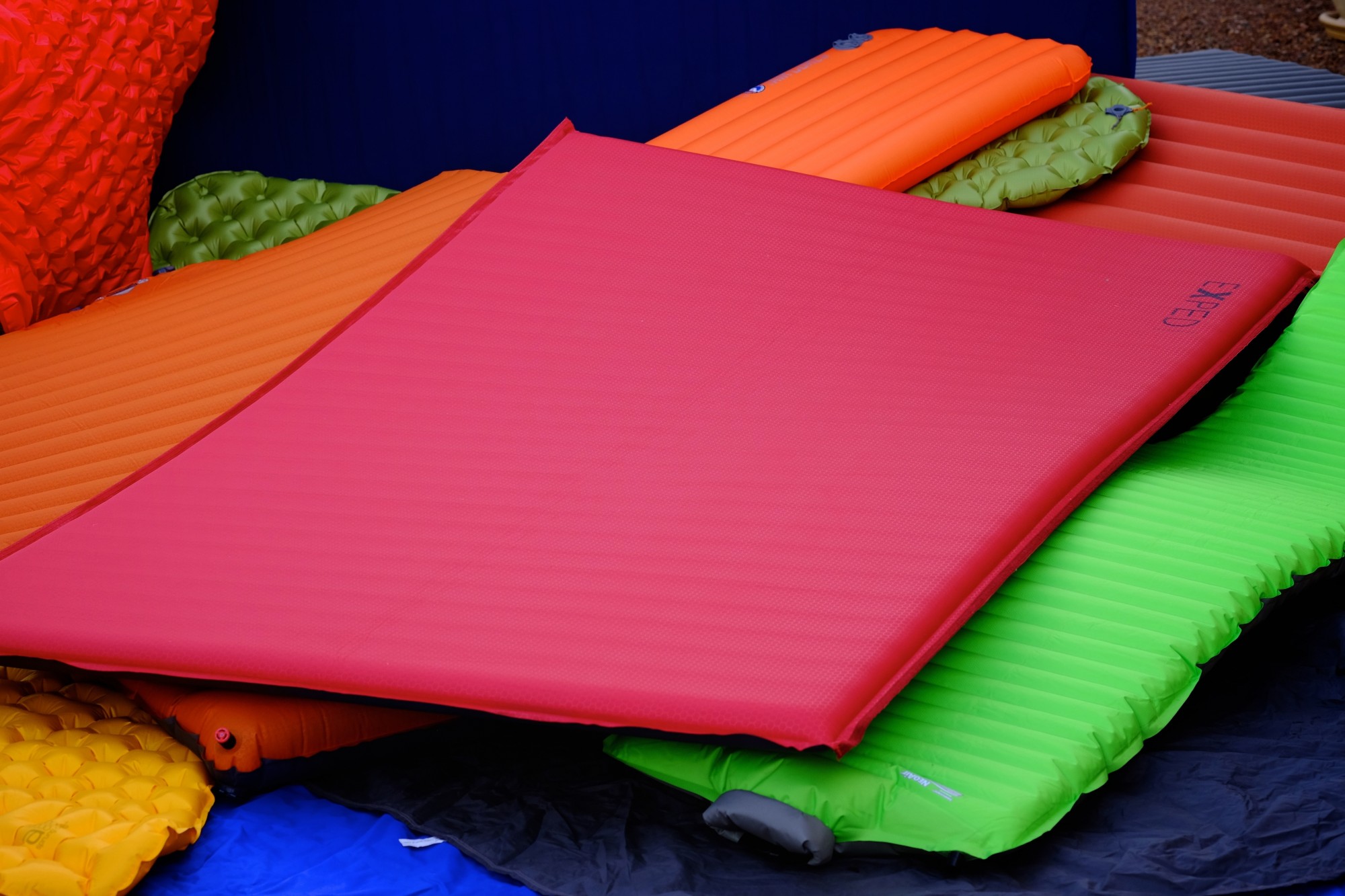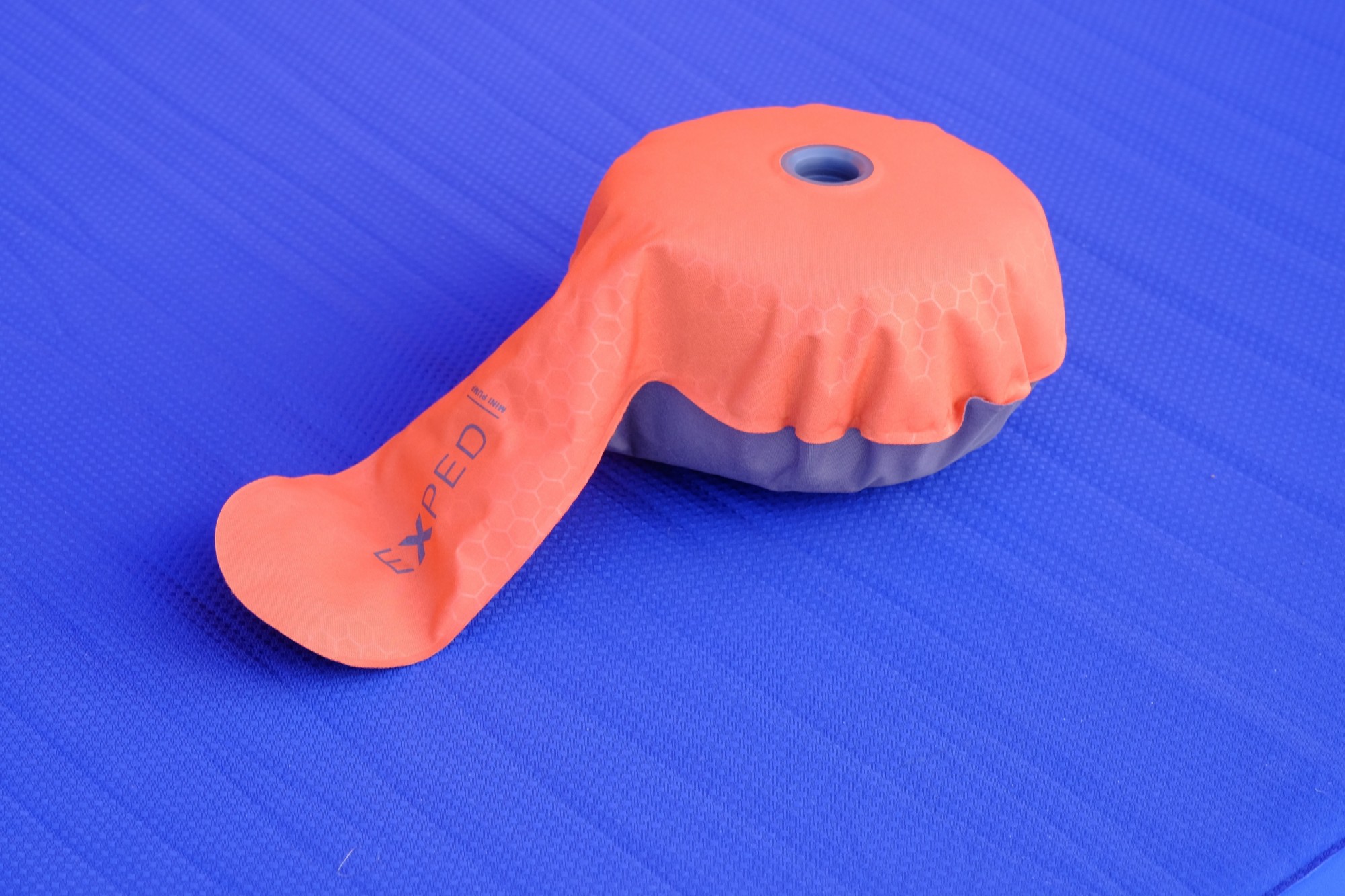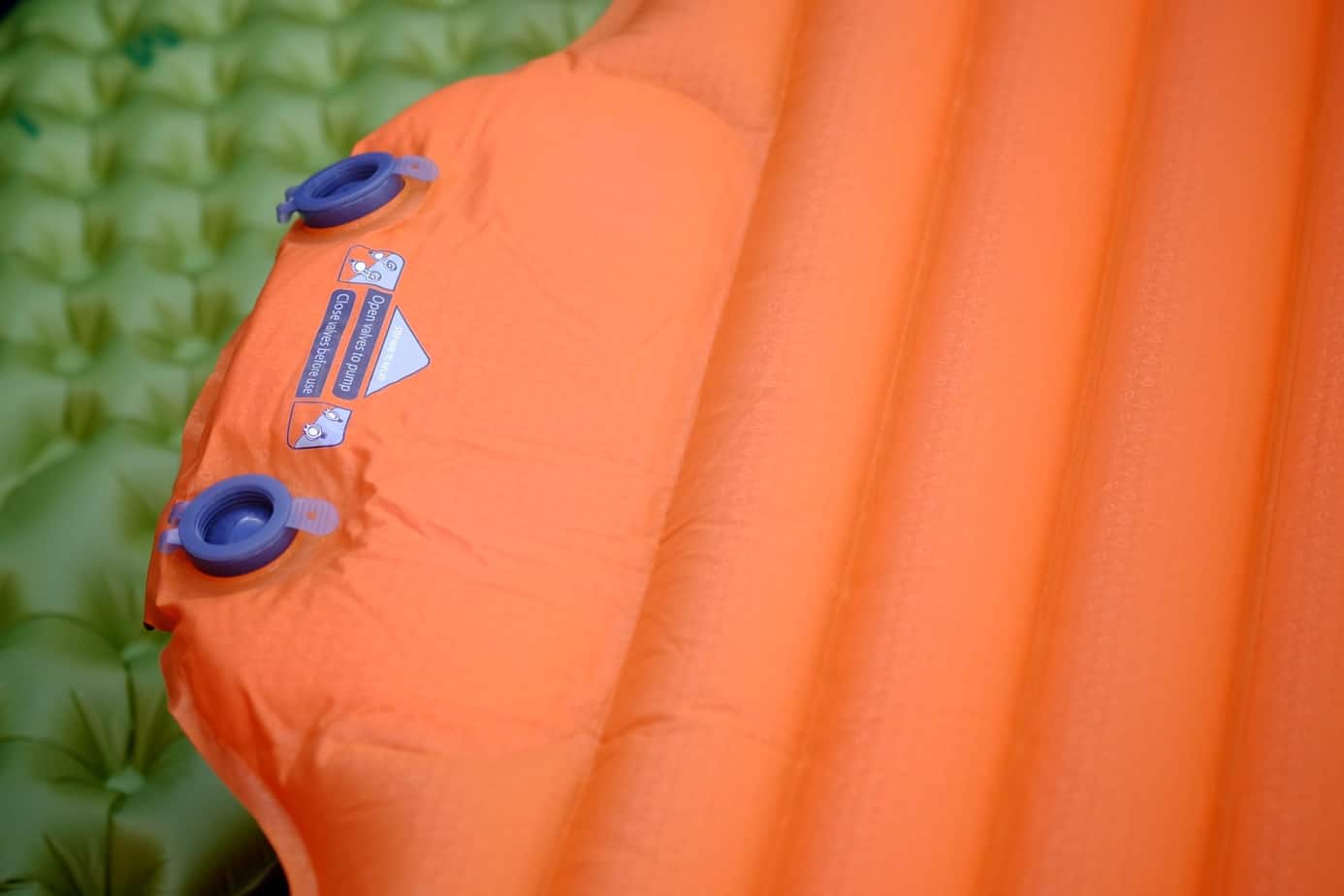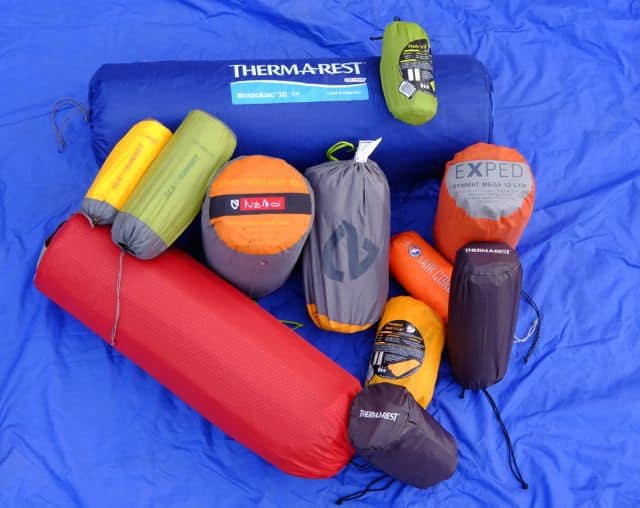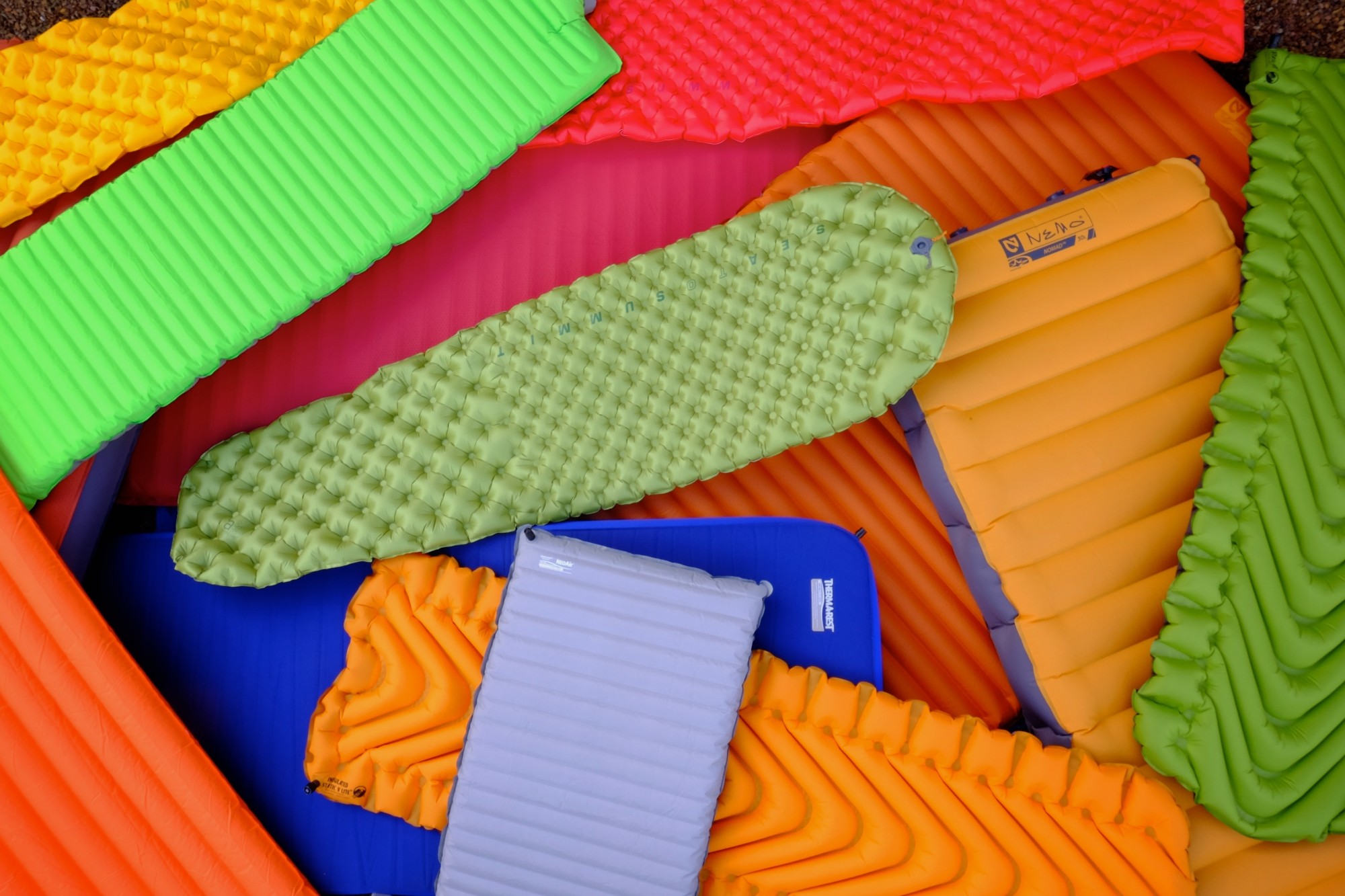A few years ago I embarked on a multi-month project to evaluate several sleeping pads for Overland Journal’s 2013 Gear Issue. Although that doesn’t seem so long ago, the pad market has expanded considerably since then. Pads have become warmer, thicker, lighter, and more compact. New baffle designs have been developed and brands not in the market just four years ago are now major players in the space.
After a cursory count of sleeping pads available to the overlander, I came to a tally of more than 127 options ranging from feather light mats to plush camp beds. It was no small task to cull out just a dozen or so to evaluate for my most recent review. The selection I chose represents a cross section of offerings applicable to all styles of travel from ultra-light bikepacking to luxurious car camping. Any of them are worthy of recommendation, but some may suit your needs better than others.
Thermarest NeoAir Trekker SV, $150
This is brand new pad for 2016 with technology we have not seen prior to this year. I don’t know if consumers are just getting lazy, but ease of inflation has become the design target for many manufacturers and this pad features Thermarest’s new Speed Valve. Leveraging a scientific principal I won’t bother to explain, the Speed Valve is a large aperture at the head of the pad that you blow air into. As you do so, additional air is sucked into the pad decreasing effort and inflation time. If you slept through physics class, as did I, the best way to describe it is––it’s voodoo magic. That said, I’m not sure it’s faster than a normal valve. The pad also has the standard Thermarest valve for minor pressure adjustments.
The Trekker series of pads are intended for three-season use and slot into the Thermarest lineup as middle weights, but they are still well suited to backpacking and other pursuits where ounces count. At 1-pound, 8-ounces for the regular NeoAir Trekker SV, it is more than light enough for most backcountry travelers.
Like all NeoAir pads, the Trekker SV is built around the brand’s proprietary Triangular Core Matrix baffle technology and lined with their heat reflective ThermaCapture fabric to give the pad an R-value of 3. Some users will select the Trekker over the NeoAir Xlite pads due to the more robust outer fabric which not only resists abrasion and punctures better than the uber light models, I tend to think it makes for a quieter night’s sleep. It might be because it’s new to me, but I’m on the fence with the Speed Valve. I wonder if it’s worth the added weight. 20x72x2.5, 1.8 pounds
What I Liked: I’m a big fan of the entire NeoAir series and have probably logged more than 50 nights on one version or another. The Trekker SV is a nice addition an an already great series of pads. They are very stable and the warmth value always impresses me. I shouldn’t forget to mention, Thermarest has the best warranty and customer service in the business and in my personal experience, back their USA-made pads better than any product in the industry.
Sea to Summit UltraLight Mat, Reg, $100 (A Personal Favorite)
For people traveling by bicycle or on foot, the old adage, every ounce counts, is not just a cheeky cliche. At 13.9 ounces the UltraLight is appropriately named, but unlike most pads in the sub-pound category, does not arrive at that low weight at the sacrifice of comfort. With the most unique baffle design in the sleeping pad market, Sea to Summit’s proprietary Air Sprung Cells create a stable sleeping surface that feels more like a proper mattress than the typical camp pad.
In the case of the UltraLight, there are 181 individual cells uniformly distributed across the entire mat. Because the UltraLight is not insulated, it isn’t an ideal solution for temperatures nearing the freezing point, but it is a superb summer pad where space and weight are critical considerations. The large multi-function valve permits a quick inflation and deflation, and includes a stuff sack, six patches, and a spare silicone valve flap. A truly pocket-sized pad, it is surprisingly comfortable. For my ultra-light bikepacking trips this is my favorite sleeper. 20x72x2, 13.9 ounces
What I Liked: Many people think thickness is the key to comfort and while that is often true, it isn’t always. Think of your bed at home. Do you really compress all 12-inches of the mattress? No. It’s the top 2-3-inches that matter most, and the Sea to Summit pads make excellent use of that small amount of squishiness.
I also love how quickly these pads purge air for a speedy pack-up. There is no struggle to expel the air and they slip effortlessly into their high quality stuff sacks.
The Insulated Alternative: Sea to Summit Insulated Comfort Light, $170
Similar to the UltraLight in many ways, the Insulated Comfort Light Mat adds more air cells and insulation for three-season use which only weighs a few grams more than its lighter counterpart. The addition of smaller cells in a tighter pattern at the hips and shoulders might appeal to those who like a firmer sleeping surface as they offer greater support at key pressure points.
Thermarest NeoAir XTherm Max, Large $200
When the ground is cold or frozen, there really is no substitute for an insulated pad. A few years ago, that would have mandated a hefty solution, typically pushing into the two pound range, or by sacrificing thickness for R-value. The XTherm Max not only compresses to a small bundle the size of a Nalgene bottle, it is also 2.5-inches thick, rectangular, and extremely comfortable. With its latitudinal baffles, side to side movements feel stable and do not conspire to pitch the sleeper off the edge.
Made with multiple layers of heat reflective ThermaCapture material, the XTherm uses internal triangulated air chambers to minimize convective heat loss and eliminates the need for additional insulation fibers which can degrade over time. The 5.7 R-value is appropriate for sleep on frozen ground and the one pound weight is impressively light.
My one minor grouse––it is crinkly and noisy to sleep on. It’s not a deal breaker, but noticeable. It might be a bigger issue if you have two people sleeping in the same tent. I recently used this pad on a three week trip to Alaska during the onset of winter and it was plenty warm. 20x72x2.5, 1.1 pounds
What I liked: It’s hard to believe such a warm and comfortable pad can fit into a small stuff sack the size of a water bottle. For those who don’t like mummy-shaped pads, the rectangular cut of the MaxTherm in the larger size adds extra space to move around. And again, I love knowing the pad is backed by Thermarest’s amazing warranty.
Klymit Static V2, $65 (Value Winner)
There are a number of things about Klymit’s sleeping pads that impress me, but nothing more so than the value. I’m amazed they can offer such a comfortable, high-tech pad as the Static V2 for only $65. At a hair over a pound with a packed size scarcely larger than a can of beer, the V2 is perfect for the ultra-light traveler. The unique chevron-shaped baffles and outer lateral air cells create a stable sleeping surface and the 2.5-inch thickness is more than sufficient to keep your hips and shoulders from contacting the ground below. With no insulation, the R-value will demand this pad only see fair weather, but it is surprisingly comfortable.
Some people ask––why the funky baffle shape? The deep voids are designed to be filled with insulation from your sleeping bag, thus augmenting thermal performance. Most pads compress your bag’s fill under your body weight. It’s a clever idea. 72x23x2.5, 16.33 ounces.
My nit-pick: The baffle design is comfortable, but it purges air reluctantly which makes the pack-up a bit slower than other pads. The valve is also a little cantankerous and hard to use, but now I’m getting downright critical. This is an amazing value and a great pad regardless of the price.
Sea to Summit Comfort Light Insulated Mat, Large Rectangular, $170
Although I didn’t count them, this opulent mat boasts of 331 individual Air Sprung Cells distributed over two independently inflated layers. That is an important element to the comfort provided by this pad. The dual air chambers allow the lower half to be inflated firm to mitigate bumps in the ground while allowing the top layer to be inflated to a lower pressure. The other obvious benefit has to do with redundancy in the event of a puncture. Adding to the comfort factor, the areas at the hips and shoulders have more Air Spring Cells to add support at those critical pressure points. In the largest rectangular size, the Comfort Plus Insulated makes for a comfy sprawl. When paired to the brand’s new Basecamp Series of sleeping bags, that combo makes for one of my best night’s sleep of all time.
The use of non-woven Exkin® Platinum reflective material and Thermolite® insulation give the pad a respectable 5 R-value for use in colder temperatures. Like all Sea to Summit pads, the use of high volume valves makes inflation and deflation quick and easy. At 2.5-inches thick, many people will immediately think the pad is too thin to offer much comfort, but Sea to Summit’s proprietary Air Cell technology affords optimal comfort with minimal air volume. Without sleeping on it, you’ll just have to trust me––it is sublimely comfortable.
Small enough to appeal to backpackers and those with a keen eye for low weight, this is a great option for motorcycle travelers or people with space constraints. I’ve spent a lot of nights on this pad, including several on hardwood floors and near frozen rocky ground, and it has never disappointed. 80×26.5×2.5, 36 ounces.
What I liked: The dual layer design, while it adds weight, is reason enough to buy this pad. If you regularly encounter bumpy, rocky, or uneven terrain, this is the pad to get. I also love the generous sleeping area, and although I can’t explain it, 331 air cells do feel better than 180.
Big Agnes Insulated Air Core Ultra, Reg, $100
One of the newer pads in this roundup, the Insulated Air Core Ultra from Big Agnes continues to prove that a good night’s sleep can be afforded by even the most lightweight and compact solutions. In the standard 72×20-inch size, this ultra-thick pad only tips the scales at 21 ounces and has a thermal rating suitable for use in temperatures as low as 15ºF.
Big Agnes does not specify the pad thickness, but by my ruler, the Insulated Air Core Ultra has a central thickness of 4-inches with slightly larger outer baffles to help keep the sleeper from rolling off the edges. The dual valve system has a high volume port to move air quickly in or out of the pad as well as a secondary valve which can be used to fine tune the pressure. Synthetic insulation and heat reflective fabrics keep cold chills at bay.
Some people, myself included, find longitudinal baffles (running the length of the pad) slightly unstable when rocking side to side, but they do greatly simplify construction. That translates to a lower price point. At $100 it is a great value. 70x40x4 21-ounces
What I liked: I love the new valve and the R-value paired to the compact size makes this a great all-season pad.
My nit-pick: This is a thick pad, but unless you like a super squishy sleeping surface, chances are you’ll inflate it to a higher pressure that means you only depress the first few inches. If you are a side sleeper and like an extra soft, albeit a bit unstable sleeping surface, this is your pad. In defense of the marginal stability, it’s a non-issue when used within the pad sleeve of a Big Agnes sleeping bag which keeps the sleeper centered on the mat.
Klymit Insulated Static V Lite, $95
Virtually identical to the Static V2 mentioned above, the Insulated variant is filled with synthetic Klymalite™ insulation giving it a 4.4 R-value. That thermal value is bolstered by Klymit’s proprietary Deep Weld Patterning, which creates large voids between the baffles. This allows the sleeping bag to loft between the baffles increasing heat retention.
Made of the same 20-denier fabric as the V2, the added insulation only bumps the weight up by 3.5-ounces and doesn’t increase the packed size by all that much either. If you’re prone to travel in cooler climates and don’t mind the extra few ounces, the Insulated Static V Lite is a great alternative to the Static V2. Both offer excellent sleeping comfort. 72x23x2.5, 19.6 ounces.
What I liked: Once again, the value is a winner and the packed size is equally impressive. I was also pleased by the comfort of the baffle design. For people who have a hard time staying centered on a pad, the unique air cushions help with that issue.
Exped Synmat Mega 12 LW, $220 (Best Warmth, Size, Comfort Ratio)
In my 2013 pad review for Overland Journal, the Exped Mega Mat won the coveted Editor’s Choice award––easily. All of our testers literally cooed the instant they settled into it. The vertical side walls, thick foam core, and soft-textured cover fabric made it feel more like a premium bedroom mattress than a backcountry bunk. The only caveat is the packed size, which is nothing short of gigantic. In fact, it is so big, many of our testers admitted they wouldn’t be able to fit it in their vehicles. I can barely fit it in my closet.
It was a relief then, when Exped released their Synmat Mega 12 LW, a pad with similar dimensions and overall shape to the original Mega Mat, but at less than half the weight and a third the packed size. Although not light at 42-ounces, the mat’s near 5-inch thickness and large 26×78-inch surface area make this a true luxury sleeper. My other grievance with the foam-filled Mega Mat was the effort required to purge it of air and get it rolled tight enough to cram into its massive stuff sack. With no foam to overcome, the new Synmat Mega 12 can be quickly deflated and returned to its storage bag in minutes with no fussing.
The 200-fill Texpedloft Microfiber insulation gives this pad an R-value of 5, and the 75-denier outer fabrics have proven sufficiently durable for our type of backcountry travel. If you’re a fan of Exped mats, you’ll love this one. I do. 78x26x5, 42 ounces.
What I liked: Finally, a version of the Mega Mat that I can take on my motorcycle. This is another offering that feels more like a bedroom mattress than a camping pad. This is one case where the longitudinal baffles feel natural and don’t upset stability.
My nit-pick: This is less of a quip about the design but a general knock against all high-volume inflatables. It’s a project to inflate and the Exped inflation sack doesn’t really help matters much. The pump sack sure beats manual inflation, but it is still a touch awkward to use. That’s just the offset for this level of dreamy comfort.
Nemo Equipment Nomad Air 30XL, $200 (This tester’s top pick)
I had a very hard time picking a favorite between the 6-inch thick Nomad and the 5-inch thick Synmat Mega 12. Both have vertical sidewalls, similar baffle construction, and while the Nomad is slightly wider and longer, both have a massive sleeping area. There are two significant differences between the two pads. While the Nomad lacks any insulation, it does have a built-in foot pump. That tipped the balance towards the Nemo, at least for me.
The Nemo also has ingenious attachment tabs which allow two Nomads to be joined together to create a queen-sized bed. At just a hair under 3-pounds, the Nomad is light enough for most travelers and the dual purge-valves provide quick and effortless deflation and pack-up. The lack of insulation and the high volume of air will invite a chill below temperatures in the 40ºF range, but for most three season users that will be fine. The packed size is appropriate for motorcycle travel or for those with space constraints, and the durable 75-denier fabric promises years of use.
After the first two nights I spent on the Nomad, I was sold. I even spent a few nights sleeping on it at home to confirm that it was the pad worthy of my top pick. It truly is a sublime sleeper. 80x30x6, 2 pounds, 14 ounces.
What I liked: The built-in foot pump is what makes this pad practical. It would be a struggle to inflate it otherwise. I also appreciate the lateral baffle design, vertical sidewalls and the slightly enlarged head baffle that helps keep my pillow from squirting off the end. The Nomad has subtle attributes I didn’t notice right away like the slightly pronounced edges which help keep me centered and the pleats on the sidewalls which help bolster the squishiness of the mattress. It’s very easy to pack-up with the big purge valves and slips into the stuff sack with no struggle.
Pinning the Editor’s Choice award to this was a tough decision, but the more nights I spent on it, the more confident I felt about that decision. I have had a couple of chilly nights on the Nomad and the lack of insulation is a concern, but the trade off for ease of inflation and massive thickness is worth it for three season use. It’s not cheap, but nothing good ever is.
Thermarest MondoKing 3D, XXL, $210 (Warmest pad)
I suppose it was only a matter of time before someone challenged the comfort provided by Exped’s much-loved Mega Mat and who better to do so than Thermarest. In my previous review, the original MondoKing was the runner up for my top pick and the updated model is as comfortable as any pad gets. The 3D designation refers to the new vertical sidewalls which increase the sleep surface by 20%. The soft-touch outer fabrics are quiet and comfortable and the 4-inches of internal foam lend the MondoKing 3D a whopping 11.4 R-value. In the lavishly big XXL size, the top deck is 80-inches long and 30-inches wide so you can sprawl out and wiggle around all you want.
The drawback to this big bed is the near 7 pound weight and packed size which rivals that of a small torpedo at 31-inches long by 8.5-inches in diameter. The internal foam and dual valves allow the pad to inflate with minimal effort, but it is a herculean endeavor to pack this sucker into its sausage casing of a stuff sack. Stowing two of these in the morning will serve as your day-break workout. But, that is the price to be paid for this level of sleepy bliss. If you like a soft and plush sleeping surface, this is your huckleberry. As a footnote, this thing is so luxurious you honestly don’t even need to inflate it much at all. 80x30x4, 6-pounds, 12 ounces.
What I liked: This pad is perhaps the most comfortable in the group and clearly the warmest. It is equally comfortable for those who like a soft or firm mattress and the material used on the sleeping surface is quite comfortable next to the skin if you just plop down right on the pad. If not for the tiny valves, struggle to pack it up, and the ridiculously small stuff sack, it would be my top pick.
My nit-pick: I am easily frustrated by stuff sacks and the new ModoKing 3D has a sack conundrum that made me furious on more than one occasion. It is barely large enough to contain this monster. On one trip we drove from 4,000 to over 10,000 feet. The tiny amount of residual air in the pad had puffed up making it all but impossible to extract the it from the sack. On another trip that sack tore as we tried to birth the pad from its nylon womb. I wouldn’t say it is a deal breaker, but I’d like to meet the person who sized the stuff sack for the MondoKing 3D so I can force them to pack it away as their penance.
Exped Sim Comfort Duo 5, $239
The recent popularity of two person pads has spawn a dozen new products from several manufacturers. I initially wanted to evaluate Exped’s double-wide Mega Mat, but the stowed size was far too big to be practical. When rolled up I could straddle it like a pony. I was also a little intimidated by the labor involved to return it to its stuff sack. Opting for a more conservatively sized pad, I chose to test Exped’s foam-filled Sim Comfort Duo 5. At 2-inches thick this is not as posh as other pads, but it does have a high 4.6 R-value. Because it is foam-filled it is mostly self inflating. At just under 50-inches wide, is more than large enough for two cozy campers.
Although a lot of consideration is awarded to pad thickness, I think the Duo 5 is very comfortable and most importantly stable when my wife starts to toss and turn. At 84.5 ounces this is by no means a featherweight pad, but the 27×8-inch packed dimensions are not overly huge. One slick detail about the Duo 5 is the ability to fold it in half and secure the edges with the sewn-in velcro to create a 4-inch pad for one. That versatility is appealing to me. I also admit there have been times when my wife and I have used the Duo 5 in our two-person tent and placed our other pads on top of it. It is amazing how much that warms a small space. 78x50x2, 84.5 ounces.
What I liked: For those who like a firmer pad, this is a nice one. The versatility is great with the ability to make this a 4-inch one person pad. Proof that the little details matter, the purge valve has a one-way flap which prevents air from returning to the pad as you try to deflate it. That’s a nice touch.
My one nit-pick: It’s pretty tough to return to its stuff sack. It’s a pass/fail endeavor. Don’t get all the air out and you will have to start over.
Nemo Equipment Cosmo Insulated 50L, $220 (Best Double Pad)
In my review in 2013, the Nemo Cosmo bested many other pads due to its supreme comfort, low weight, and small packed size. Known for their clever design innovations, Nemo’s Cosmo series of pads were the first to employ a built-in foot pump. Their new Cosmo 50L retains all of those features in a two-person format and piqued my interest for a few reasons. First, at only 3-pounds and 11-ounces, this is a lot of pad for the low weight––literally. The 4-inch thick baffles provide exceptional comfort and the Primaloft insulation is sufficient to stave off cold temps down to the freeze point.
The large baffle at the head of the mat helps boost pillow power and keeps it from flopping off the end. Although it takes some time to inflate, it’s easy to do with the pump. I can have the pad fully pumped up in under 90 seconds. The stability is surprisingly good, but two sleepers do create a minor amount of disturbance anytime one of them shifts or moves. That isn’t a design flaw, just the product of two people sleeping on the same bed. The packed size is surprisingly small at 8×11-inches and I didn’t have any challenges getting the pad back in the stuff sack. Kudos to Nemo on that score. Another strong value at just $220, I highly recommend this to any backcountry couple––but––I’m not going to lie, I’ve used this as a solo pad more than once and loved it. 72x50x3.5 3.11 pounds
What I liked: Everything about this pad is awesome. The built-in foot pump (pictured above) simplifies inflation and I love the large head baffle.
Conclusion
Of the pads I’ve tested in the last few years, these represent my top picks for various reasons. I could have expanded the list by a factor of two as there are several excellent options on the market, many of them subtle riffs on these listed above. In most cases, choosing a proper pad boils down to compromise. Something has to give be it R value, price, packed size, or thickness. Although comfort is subjective, that is the one thing all of these pads have in common. For what they are, they offer the maximum in sleepy bliss.
Durability, puncture resistance and longevity: People often ask me how durable these pads are and many more tell me about their sleepless night when their pad went flat. I have to claim ignorance on this score to some degree. Despite hundreds of nights on inflatables, even in the desert, I have only suffered a couple of punctures. I attribute that to always using a ground sheet, never forgetting to carefully search the ground for pokey bits, and regularly inspecting my pads between uses. My trips in the woods have also afforded me time to learn a few tricks to help with punctures.
- Always sleep on the same side of any pad. This reduces your search area for puncture holes by half. If the top never touches the ground, it’s unlikely it will have the puncture hole.
- Keep your patch kit, and a headlamp, within easy reach while you sleep. If you get a midnight puncture, you’ll be glad you did. Keep an alcohol wipe with your patch kit to help the adhesive stick.
- Don’t use water to find a hole. Instead, make a cheap and tiny stethoscope with a small funnel and a short piece of tubing. Inflate the pad as much as you can and then use your ear to listen for the sound of escaping air. It works incredibly well and can be done in the dark in the middle of the night. The little scope only weighs a few grams and packs small.
- Patch the hole and look for another. If there’s one pokey, there’s probably more.
- Be pad smart. Don’t kneel on it, use it as a sitting surface on rough ground, or generally neglect to understand how much it sucks when your pad goes flat at night. Most punctures are attributed to users simply not being careful.



